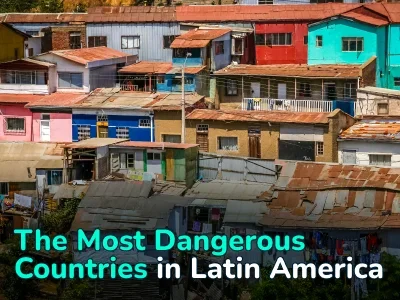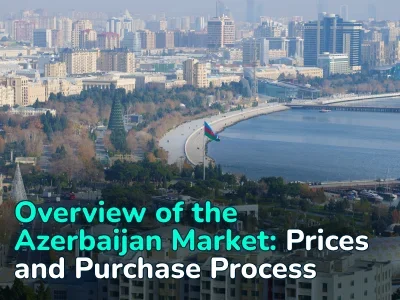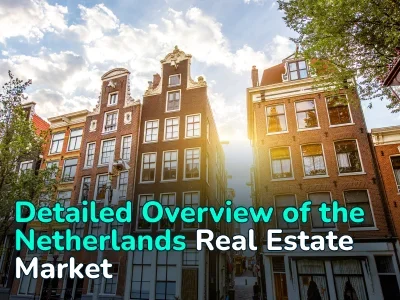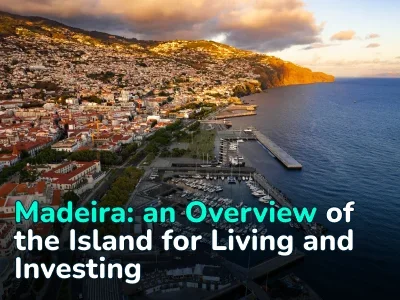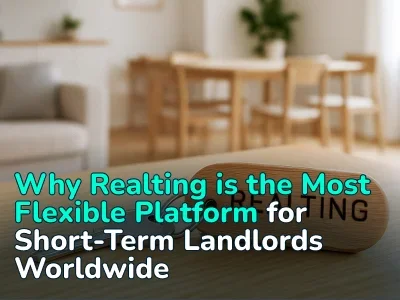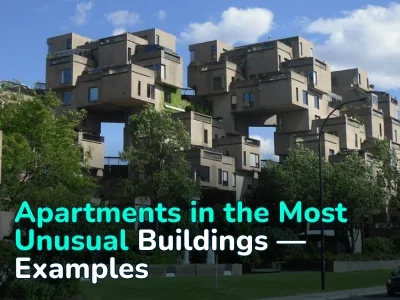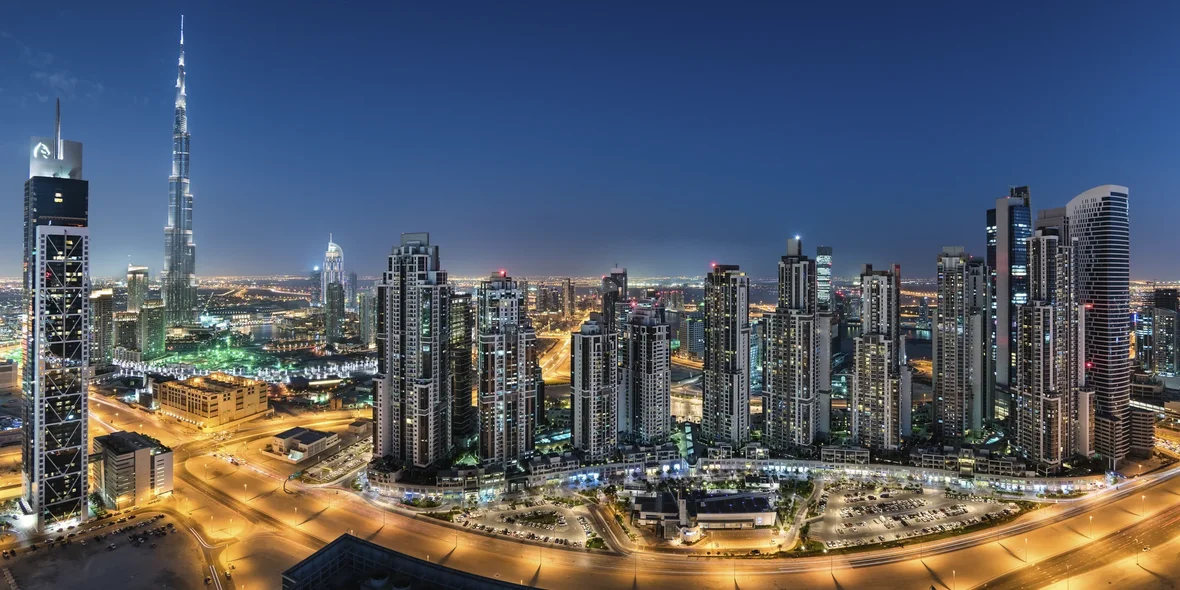
From Rent to Groceries. How Much Does It Cost to Live in Dubai
Dubai’s government has made a strong push to attract expats and tourists from around the globe. To support this vision, modern real estate projects are underway, artificial islands are being constructed, and infrastructure continues to develop rapidly. These initiatives bring significant financial inflows into the emirate’s economy, which are then directed toward raising wages and improving living and working conditions.
The only downside to this prosperity? The cost of living. Given Dubai’s immense popularity among expats, housing prices and logistics costs — both for imports and exports — have driven up everyday expenses.
In this article, we’ll explore whether living in Dubai is expensive and which product and service categories contribute the most to the total cost of living.
Housing in Dubai
Buying or renting a home is typically the largest expense for residents. One unique feature of Dubai’s rental market is the payment structure: rent is paid via checks, either 1, 2, 4, or 12 per year, depending on the agreement with the landlord. Fewer checks usually mean better rental terms. For example, a one-year lease for 100,000 AED ($27,225) paid in a single check may be discounted to 95,000 AED ($25,864). The same apartment paid in four checks would total the same, but with 12 checks, the price may rise to 107,000 AED ($29,131). Landlords may also request a deposit of 5–10% of the total rent.
Average monthly rent in Dubai:
|
Apartment Type |
Budget Areas (Deira, Bur Dubai, Al Nahda) |
Mid-Range (JVC, Al Barsha, Business Bay) |
Premium (Marina, Downtown, Palm Jumeirah) |
|
Studio |
2500–3800 AED / $680–$1030 |
4200–5500 AED / $1143–$1360 |
6000–9000 AED / $1630–$2450 |
|
1-Bedroom |
3500–5000 AED / $950–$1360 |
6000–8500 AED / $1633–$2315 |
9000–14,000 AED / $2450–$3810 |
|
2-Bedroom |
5500–7500 AED / $1495–$2040 |
8500–12,000 AED / $2314–$3265 |
14,000–20,000+ AED / $3810–$5445 |
|
3-Bedroom |
7000–10,000 AED / $1905–$2720 |
12,000–16,000 AED / $3265–$4355 |
18,000–30,000+ AED / $4900–$8165 |
Foreigners can purchase property in designated freehold zones, where they gain full ownership rights. Outside these zones, only long-term leases (typically 99 years) are permitted, and any transactions require landlord approval.
In central areas, property averages 2241.63 AED per ft² ($610) or 24,124 AED per m² ($6567). Outside the city center, prices drop to 1235.23 AED per ft² ($336) or 13,295 AED per m² ($3619).
Most expats rely on mortgages, which require at least a 20–30% down payment. With an average interest rate of 3.99–5.49% and a maximum loan term of 25 years, a 2M AED ($544,515) apartment would require:
- 400,000 AED ($108,903) down payment.
- 1.6M AED ($435,612) mortgage.
- Monthly payment: ~8880 AED ($2395) at 4.5% interest.
- Additional yearly service charges: 10,000–20,000 AED.
- Total monthly expense (including insurance and fees): ~10,300 AED ($2804).
Food and Groceries in Dubai
Prices vary drastically between supermarkets — Lulu and Union Coop are the budget-friendly options, while Spinneys and Waitrose are on the premium end.
Average food prices:
|
Product |
AED |
USD |
|
Milk (1L) |
6.5–8.5 |
1.77–2.31 |
|
Bread (500g) |
5–7 |
1.36–1.90 |
|
Eggs (12 pcs) |
9–12 |
2.45–3.27 |
|
Rice (1kg) |
8–16 |
2.18–4.36 |
|
Chicken fillet |
33.82–60 |
9.20–16.35 |
|
Beef (1kg) |
30–50 |
8.18–13.62 |
|
Apples (1kg) |
8.5–15 |
2.31–4.09 |
|
Bananas (1kg) |
6.82–12 |
1.86–3.27 |
|
Tomatoes (1kg) |
6–8 |
1.63–2.18 |
|
Potatoes (1kg) |
4–6 |
1.09–1.63 |
|
Onions (1kg) |
4–7 |
1.09–1.90 |
|
Water (1.5L) |
2–5 |
0.54–1.36 |
Source: Betterhomes, Krediumkredium.ae.
Depending on lifestyle and personal preferences, monthly grocery expenses range from 800 to 1200 AED ($218—$327) for a single person and from 2000 to 3500 AED ($545—$954) for a family of four. When it comes to dining out—whether at cafés or restaurants—the prices are as follows:
|
Meal type |
AED |
USD |
|
Street food |
10–20 |
2.72–5.45 |
|
Fast food |
20–45 |
5.45–10.90 |
|
Budget restaurant |
20–80 |
5.45–21.78 |
|
Mid-range restaurants |
50–150 |
13.62–40.90 |
|
Fine dining |
300–1000 |
81.80–272.70 |
|
Local beer (0.5L) |
20–60 |
5.45–16.34 |
|
Imported beer (0.33L) |
40–60 |
10.89–16.34 |
|
Cappuccino |
10–30 |
2.72–8.18 |
Source: Numbeo.
Public Transport in Dubai
Dubai boasts a well-developed public transport network that includes the metro, buses, trams, and water transport. All these services use the Nol Card payment system. There are several types of Nol Cards:
- Red Nol Card. Designed for tourists and occasional users. Costs 2 AED ($0.54) and can hold up to 10 trips or a daily pass (20 AED / $5.45 for regular class, 40 AED / $10.90 for Gold Class). Can only be used on one type of transport at a time (e.g., metro only).
- Silver Nol Card. Costs 25 AED ($6.80) and comes preloaded with 19 AED credit. Can be topped up to 1000 AED ($272) and used across all transport types (metro, bus, tram, water transport, and parking).
- Gold Nol Card. Same as the Silver Card in features, but gives access to Gold Class cabins (more spacious, leather seats). Fares are double regular rates: 6 AED ($1.63) per metro zone instead of 3 AED ($0.82).
- Blue Nol Card. For Dubai residents, linked to their Emirates ID. Costs 70 AED ($19.04), including 20 AED travel credit. Offers benefits such as free travel for people with disabilities and 50% discounts for students, seniors, and residents.
Taxi rates:
|
Service |
AED |
USD |
|
Base fare |
12 AED |
$3.27 |
|
Per km |
2.8 AED |
$0.79 |
|
Waiting (per hr) |
30 AED |
$8.20 |
Renting a personal vehicle starts at 80 AED ($21.78) per day for an economy-class car and goes up to 500 AED ($136.13) per day for a premium-class vehicle. The mid-range segment usually begins at 150 AED ($40.84) per day.
Fuel prices:
|
Fuel type |
AED/L |
USD/L |
|
E-Plus 91 |
2.38 |
$0.65 |
|
Special 95 |
2.46 |
$0.67 |
|
Super 98 |
2.57 |
$0.70 |
|
Diesel |
2.63 |
$0.72 |
EV charging costs:
|
Charging type |
Rate (AED/kWh, excl. VAT) |
Rate (USD/kWh, excl. VAT) |
|
AC (slow) |
0.70 |
$0.19 |
|
DC (fast) |
1.20 |
$0.33 |
Communication and Internet
In Dubai, the main mobile network providers are Etisalat (e&) and du. They offer a variety of mobile plans, including both prepaid and postpaid options. Prepaid plans are convenient for tourists and short-term visitors. Postpaid plans, on the other hand, are better suited for those planning to stay in Dubai longer or who require a larger amount of data. These same providers also offer home internet services.
Mobile and internet plans:
|
Service type |
Provider |
Speed/Data volume |
Price (AED) |
Price (USD) |
|
Prepaid Mobile |
Etisalat (e&) |
1 GB + 30 minutes |
49 |
13.35 |
|
Postpaid Mobile |
du |
20 GB + 1000 minutes |
200 |
54.00 |
|
Home Internet |
Etisalat (e&) |
Up to 1 Gbps |
399 |
109.00 |
|
Home Internet |
du |
Up to 800 Mbps |
439 |
120.00 |
|
Wireless Internet |
Etisalat (e&) |
Unlimited |
229 |
62.50 |
Healthcare Services
In Dubai, health insurance is mandatory for all residents. In most cases, it must be paid for independently, although some employers do provide insurance coverage for their employees.
Main types of insurance plans:
- Essential benefits plan (EBP). Designed for residents earning less than 4,000 AED ($1,090) per month. The cost of this plan ranges from 550 to 650 AED ($150—$177) per year. It covers emergency care, surgeries, lab tests, medication, maternity services, and both inpatient and outpatient treatment. The annual coverage limit is 150,000 AED ($40,872).
- Standard and premium plans. The cost ranges from 1,500 to 6,500 AED ($408—$1,770) per year, depending on the scope of coverage and services included.
Average costs of medical services:
|
Service |
Cost (AED) |
Cost (USD) |
|
General Practitioner Consultation |
250–600 |
68–163 |
|
Pediatrician Consultation |
55–260 |
15–71 |
|
Dentist Consultation |
150–500 |
41–136 |
|
Tooth Filling |
150–300 |
41–82 |
|
Teeth Whitening |
1800 |
490 |
|
Tooth Extraction |
300–700 |
82–190 |
|
General Blood Test |
100–250 |
~27–68 |
|
Abdominal Ultrasound |
400–800 |
~109–218 |
|
MRI (one area) |
1500–3000 |
408–817 |
|
ECG |
200–400 |
54–109 |
|
Childbirth (natural) |
10,000–20,000 |
2,720–5,440 |
|
Childbirth (C-section) |
15,000–25,000 |
4,080–6,800 |
|
IVF Program |
35,000 |
9,500 |
|
Psychotherapy Session |
480–1470 |
130–400 |
Final Word
Dubai undeniably offers a high standard of living, with modern infrastructure and quality housing, but the cost of enjoying these benefits is equally high. The UAE has virtually no agriculture, and the local production of construction materials is underdeveloped due to a key limitation: desert sand is unsuitable for making concrete, the most essential building material. As a result, both food prices are 20–50% higher, and sand for construction has to be imported, contributing to the high cost of housing in the UAE.
When you factor in transport, healthcare, and education, it becomes clear that the average monthly salary in Dubai of 15,000 AED ($4,080) barely covers the monthly expenses for a single person, which range from 10,000 to 14,500 AED ($2720—$3945). Budgeting tightly and cutting down on non-essential expenses becomes a necessity.
Therefore, despite the attractive living and working conditions, your income needs to exceed the average to maintain a comfortable lifestyle. A monthly income of 25,000–30,000 AED ($6806—$8167) is more appropriate — a level of income typically available to highly skilled professionals.
If you’re planning to work in Dubai in a lower-paid position, look for job opportunities that include employer-provided housing and meals as part of the employment package.
Author
I write informative articles about real estate, investments, job opportunities, taxes, etc.











